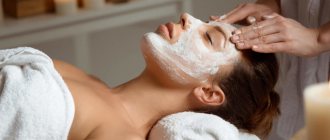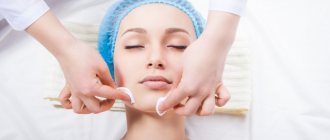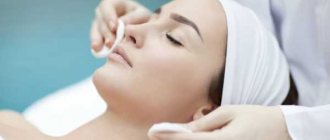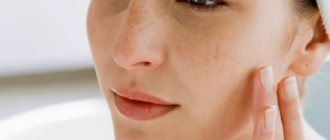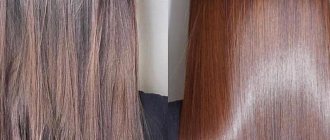Main signs of contaminated skin
The epidermis of the face is the most vulnerable and unprotected area of the skin, constantly in contact with the external environment and exposed to its negative influences. During the day, a lot of contaminants accumulate on the surface of the face: particles of dust, precipitation, gases, remnants of decorative cosmetics and care products, sebum, dead cells. Insufficient cleansing can cause deterioration of the skin condition.
The first signs of epidermal contamination:
- Dull, uneven skin texture.
- Enlarged pores, feeling of an oily film on the face.
- An abundance of blackheads, small pimples, comedones.
When these symptoms occur, the usual washing becomes insufficient, and the beauty routine must be supplemented with the obligatory stage of deep cleansing of the facial skin.
Why is it important to cleanse your facial skin?
The surface of the epidermis is normally inhabited by a variety of bacteria, fungi, viruses - the totality of microorganisms forms an individual microbiome for each person. External pollution contributes to disruption of microflora, damage to the hydrolipid barrier and a decrease in the protective functions of the skin.
Functions of regular and thorough facial cleansing:
- Helps maintain a balance of beneficial microorganisms on the skin surface.
- Prevents pore contamination, the appearance of comedones and blackheads.
- Removes the stratum corneum of cells, promotes cellular renewal and prevents premature aging: the appearance of wrinkles, decreased tone, elasticity and firmness of the skin.
- Improves the ability of cells to absorb beneficial components from care formulas.
- Controls the functioning of the sebaceous glands and regulates oily skin: stress, lack of sleep, taking certain medications, an unbalanced diet - all this causes increased sebum production, as a result of which rashes can appear even on skin that is not prone to acne.
- Prevents oxidative stress and the negative effects of free radicals.
How to cleanse your facial skin: 3 main methods
You can cleanse your skin using three types of procedures; use them in combination for the best effect:
- Daily cleansing at home
is a mandatory skin care procedure for any type of skin, aimed at removing makeup, delicately removing residual external impurities from the face and preparing for the application of tonic and corrective products. - Weekly deep cleansing at home
- exfoliation of the stratum corneum and intensive cleansing of the skin at a deeper level using scrubs, peelings, gommages, masks. The frequency of procedures depends on the type and condition of the skin. - Salon cleansing procedures
are cosmetology services aimed at professional hardware facial cleansing, deep cleansing and skin renewal using seasonal dermal peels and highly concentrated masks. The frequency of procedures depends on the type and condition of the skin.
Skin cleansing cosmetics
Do facial cleansing in stages. Stages of complete daily facial cleansing:
- removing makeup, washing with a cleanser;
- steaming;
- removing blackheads using any of the described methods;
- moisturizing with a mask or cream.
The arsenal of facial cosmetics is large. In order to properly cleanse the skin of the face every day, preparations are selected taking into account the type of skin:
- For oily skin, foams, mousses, and alcohol-free toners are optimal. Scrubs are used to intensively cleanse the face.
- For dry skin, milk, homogeneous and emulsion oil formulations are used. They easily and delicately cleanse, saturate the skin tissue with vitamins, and moisturize.
- Almost all cleansers are suitable for normal skin: gels, milks, foams, micellar water, lotions based on medicinal herbs.
- For combination skin, gels, foams, and milks are optimal.
To cleanse your face at home, you need to buy only high-quality products from well-known manufacturers. The composition should not contain harmful compounds: gluten, glycols, animal components.
Scrubs
We should also talk about scrubs and how to properly cleanse the skin with them. A huge number of cleansing products from different manufacturers are sold in stores. With such variety, it's easy to get confused.
The best store-bought cleaning products:
- L'Oreal Pure Zone Absolute purity 7 in 1;
- Garnier Skin Naturals Clear Skin Active;
- La Roche-Posay Physiological Ultra-Fine Scrub;
- Kiehl's Pineapple Papaya Facial Scrub;
- Lancôme Exfoliance Confort.
A high-quality scrub can be made from products available in the kitchen. For deep facial cleansing at home, the following recipes are offered:
- Soda scrub is a simple and common way to cleanse your facial skin at home. Mix soda and salt one tablespoon at a time. The mixture is poured with kefir until it reaches a mushy consistency.
- Coffee. A tablespoon of natural yogurt is poured into the coffee grounds.
- Salt for oily skin. A mixture is made from a teaspoon of fine salt and the same amount of vegetable oil.
- Aspirin for problem skin. 4 tablets are ground into powder, filled with a tablespoon of water. Natural honey is added to the mixture.
- Charcoal for blackheads. 10 tablets of activated carbon are crushed into powder and filled with a teaspoon of water.
- Clay. Mix half a teaspoon of coconut flakes, the same amount of green clay and crushed oatmeal. Water is added to the mixture until a creamy mass is formed.
- With bodyaga for inflammation and excess pigmentation. Powdered bodyaga and 3% hydrogen peroxide are mixed until a paste is formed.
It is treated with a scrub and massaged with light massaging movements for 2-3 minutes. The product is washed off with lukewarm water.
You can also take care of it at home using folk remedies with good results:
- any vegetable oil;
- sour milk or sour cream;
- bran and oatmeal;
- corn flour.
How to properly carry out daily cleansing: instructions
Facial cleansing is the longest and most important skin care procedure that is performed at home and depends on you. It consists of several basic stages.
Preparation or makeup removal
The stage of removing surface impurities that have accumulated on the surface of the skin during the day or night.
Many people neglect morning cleansing, believing that the epidermis did not have time to get dirty overnight. While we sleep, the body's metabolic processes are continuously working, internal cleansing and cell restoration occur. For example, the peak of sebum production occurs at 4–5 o'clock in the morning, so it is important to take care of cleansing the facial skin twice a day (more often it is not recommended so as not to damage the hydrolipid mantle).
The following products are suitable for makeup removal:
- micellar water (for all skin types);
- milk (for dry and sensitive types);
- cleansing lotion (often does not require rinsing with water);
- Makeup remover wipes (travel version).
Washing (basic cleansing)
The second step is to wash your face with water and cleanser. At this stage, you need to cleanse the facial skin of any remaining impurities dissolved in the first stage and completely empty the pores.
There are special products for washing:
- for oily and combination skin – foams with a sebum-regulating effect, facial gels + “2 in 1” scrub;
- for sensitive people – soft mousses, foams;
- for dry and dehydrated skin – moisturizing and softening milk, cream, balm.
Apply a small amount of product to damp facial skin. Then use gentle circular movements with your fingertips to massage the entire surface of your face, avoiding the eye area. Finally, rinse off the cleanser with water and pat your face dry with a clean, soft towel.
Moisturizing and toning
The final, but not the last most important stage of cleansing is skin moisturizing. After washing your face, wipe your dry face with a cotton pad soaked in a toner with a moisturizing formula. This will restore the pH balance of the epidermis, prepare for the further corrective stage of care and improve the penetration of beneficial components from care cosmetics into the deep layers of the skin.
How to cleanse different skin types?
In order to cleanse your facial skin properly and maintain its health and youth, you need to choose special cosmetics for washing that are suitable specifically for your skin type.
After all, insufficient cleansing can lead to clogged pores and the appearance of acne. And too zealous cleansing can disrupt the skin's hydrolipid mantle and lead to dehydration. Therefore, choose cosmetics from reliable brands and be sure to pay attention to the label; most products indicate what type of skin it is intended for.
Oily skin
Oily skin types are characterized by enlarged pores, increased sebum production and a greasy shine. That is why cleansers should have a sebum-regulating function, tighten pores, clean thoroughly, but at the same time provide the skin with moisture and not dry it out. Oily skin, like any other, needs hydration.
For such facial skin, cosmetics containing thermal water, kaolin and zinc are well suited. Keep in mind that the composition should not contain ethyl alcohol!
Dry skin
Dry skin is usually quite thin and sensitive, it requires gentle and careful cleansing. Cleansers for dry skin types should be gentle and softening, have restorative functions, and should not contain alcohol. Most often these are creams, mousses or foams.
The exfoliation procedure should be approached with caution and the means chosen wisely. Scrubs with rough abrasive particles can damage dry skin.
Normal skin
Lucky people with normal skin type have the widest choice among cosmetics. They are not limited by either product types or textures. Suitable products must be labeled “for normal skin” or “for all skin types.”
Combination skin
Those with combination or mixed skin types will have to adapt when looking for cleansers. This is necessary so as not to harm the already dry areas of the skin in the U-zone. If after washing your face there is a feeling of tightness, then the product is not suitable for you. It is better to stick to products for dry or normal skin types.
Facial cleansing: different types
- combined
- mechanical;
- ultrasonic;
The type is selected after consultation with a doctor, during which the specialist, based on the characteristics of the skin and individual indications, chooses the most effective method of treatment. Ultrasonic facial cleansing is recognized as the most effective.
Indications for ultrasonic facial cleansing:
- sebaceous glands with enlarged pores;
- comedones;
- a large number of acne in the healing stage;
- combination and aging skin;
- lack of skin tone.
Contraindications:
- eczema;
- herpes;
- severe hypertension;
- epilepsy;
- diabetes;
- mental disorders.
Why do you need to cleanse your face?
The skin is the largest organ of the human body, which ensures its respiration, metabolic processes, and also protects against the penetration of infections. However, people's facial skin varies, and depending on its oil content, both the sebaceous and sweat glands, which are abundantly located in the thickness of the layers of the skin, function differently.
Technique for deep skin cleansing at home
Deep cleansing and exfoliation (exfoliation) of the skin is primarily necessary for oily skin types with a predisposition to acne - dead skin cells of the epidermis mix with sebum and clog pores, causing rashes.
Important(!):
To exfoliate the skin, use soft scrubs with small natural abrasive particles or mineral masks, carry out the procedure 1-2 times a week.
Other types (dry, normal) also need deep cleansing - corneocytes (dead cells of the epidermis) disrupt the functioning of the sebaceous glands and prevent the penetration of active cosmetic substances into the dermal layers. Without sufficient cleansing, the skin loses its tone, elasticity, becomes dull in color and uneven in texture.
Carry out the exfoliation procedure once a week, choose delicate peelings or soft gommages. Look for products labeled “hypoallergenic” and “suitable for sensitive skin” on the packaging.
Important(!):
When caring for very sensitive skin prone to allergic reactions, it is worth excluding the stage of skin exfoliation so as not to injure the already weakened epidermis.
When and who should not cleanse?
Many people believe that visiting a beauty salon or similar manipulations at home on their own is allowed for absolutely everyone.
This is a deep misconception. Mechanical facial cleansing has a number of prohibitions:
- acute dermatitis;
- herpetic rashes;
- eczema;
- dry or sensitive skin;
- any manifestations of allergies;
- inflammatory skin diseases;
- blood diseases;
- hypertension;
- bronchial asthma.
You should not clean your face during menstruation or with pronounced premenstrual syndrome.
The tendency to inflammation is also an obstacle to the procedure.
Indications for mechanical facial cleansing:
- large pores;
- excessive skin greasiness;
- the presence of wen in large quantities;
- decreased skin turgor;
- blackheads, especially in the T-zone.
Important. Mechanical facial cleansing gives a pronounced lifting effect by improving the movement of blood and lymph in the upper layers of the epidermis.
Methods for cleaning leather in the salon
Cosmetologists also offer a list of aesthetic procedures aimed at deep cleansing and renewal of the epidermis, for example, chemical and hardware exfoliation of the facial skin. Such procedures involve the use of acids and enzymes that literally dissolve the stratum corneum of cells.
Important(!):
After chemical or acid peeling, the photosensitivity of the skin increases. Be sure to use a daily sunscreen with at least SPF 30 to prevent photoaging.
The most popular salon procedures for deep cleansing of facial skin:
- Ultrasonic cleansing (ultrasonic peeling) – cleansing pores of excess sebum and dead cells by exposure to ultrasonic waves.
- Vacuum cleaning is a gentle hardware method of cleansing the skin. The procedure effectively cleanses pores, gets rid of blackheads, and tightens the oval of the face due to the lymphatic drainage effect.
- Mechanical (manual) cleaning is the most traumatic and effective procedure for cleansing clogged pores. A classic option for cleansing the skin using a loop spoon (UNO).
- Galvanic (disincrustation) cleansing is suitable for thick, oily skin: a salt solution is used and microcurrents are applied to the skin. As a result of the procedure, the pores are cleaned, blackheads and comedones disappear.
- Microdermabrasion (resurfacing) is aimed at intensive renewal of the epidermis and smoothing out stagnant spots (post-acne).
Care after acid peeling
Cleaning with exfoliants is the main cosmetology trend in recent years. This is the most gentle procedure using high concentration fruit acids. They dissolve dead cells of the stratum corneum and cleanse the pores from the inside - they treat even complex forms of acne and tighten the texture of the face. In addition, dry cleaning helps cope with photoaging: it stimulates the production of collagen and elastin, smoothes wrinkles, and removes pigmentation.
Despite the absence of physical damage, specific facial care after cleansing and peeling is still required. AHA and BHA acids increase sensitivity to ultraviolet radiation—be sure to apply sunscreen with 30 SPF or more before going outside.


